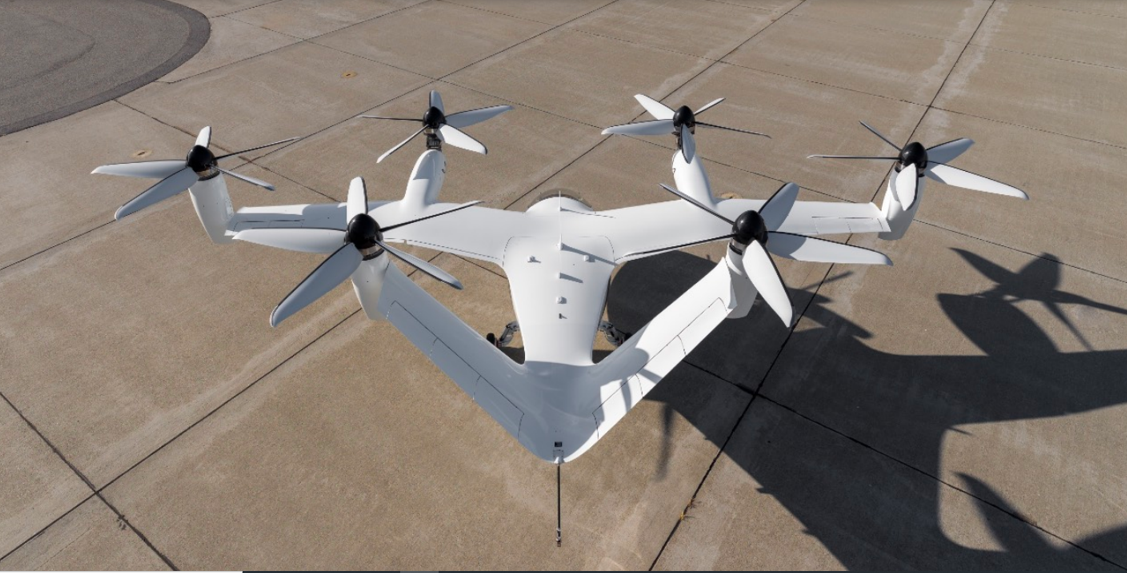
Joby Aviation has signed a revised certification basis for its tiltprop S4 after the FAA changed direction of certifying electric vertical takeoff and landing (eVTOL) aircraft, and says it is still on track to launch air taxi operations in 2024.
No design changes came out of the revision, the startup said.
The startup was forced to revise its G-1 certification basis after the FAA in May switched from Part 23 small airplane category to Part 21.17b special class powered lift category. But Joby used the opportunity to expand the scope of its G-1, Didier Papadopoulos, Joby head of aircraft OEM, told analysts on Aug. 12.
“This is a great opportunity for us because what we also were able to do was to bring in some potential other regulations that we’re expecting already through special conditions. We brought those in and included them already in the G-1,” he said on Joby’s second-quarter results call with analysts.
With the special conditions included in the G-1, the scope of certification is clearer, Papadopoulos said. “We have a clear understanding of the regulations that will apply to us and we have a clear path to move forward.” The FAA has so far approved 74% of the means of compliance and 37% of the area-specific certification plans submitted by Joby, he added.
“The FAA told us that they didn’t expect that this administrative change to certification would have any impact on the timeline. And I think we’ve seen that borne out over the last few months,” Joby Chairman Paul Schiarra says.
“There is still work to be done to define how the rules for operating our aircraft will work under the revised approach. But the FAA has also committed to making sure these will be ready for us, drawing on both existing helicopter and airplane rules,” founder and CEO JoeBen Bevirt told analysts.
“The rulemaking process for these Special Federal Aviation Regulations, or SFARs, has been fast-tracked, and the FAA has said publicly that it aims to publish a notice of proposed rulemaking before the end of the year,” he says. Industry submitted its recommendations for the SFAR to the FAA in late July.
Also in July, Joby applied for the first foreign validation of FAA certification. The UK Civil Aviation Authority (CAA) has agreed to accept Part 21.17b certification, Bevirt said, while also using the European Union Aviation Safety Agency’s (EASA) Special Condition for VTOL to certify UK-developed eVTOL aircraft.
Meanwhile, Joby has completed the tail section of its next, partially conforming “production-intent” prototype, and assembly of the wing and fuselage are underway at the company’s pilot production facility in Marina, California.
Internal acceptance testing has begun on the majority of powertrain and electronics assemblies for this aircraft—including “design-intent” electric propulsion units, battery modules and mission display computers produced in-house by Joby.
Working with the U.S. Department of Energy’s National Renewable Energy Laboratory, Joby has completed what it believes to be the first life cycle assessment of an eVTOL aircraft’s environmental footprint, including manufacturing, operations and disposal or redeployment.
“The initial results are very positive,” Bevirt said. “We expect our aircraft will have a lower environmental footprint than the vast majority of other existing modes of transport and … a comparable or smaller climate footprint than electric vehicles, assuming both are charged with renewable energy.”
After completing their useful life on aircraft, battery cells will be reused in energy storage systems across Joby’s Skyport Network of vertiports. After cells finish their second life at the Skyports, Joby has partnered with Redwood Materials to recycle the critical metals back into the battery supply chain.
“We’ve built similar principles into our airframe manufacturing processes using automation and additive techniques where possible to reduce material waste, and we’re working with third parties to recycle excess titanium, aluminum and carbon fiber,” Bevirt said. Carbon Conversions will recycle scrap fiber.
Joby ended the second quarter with just less than $1.2 billion in cash, having spent $74.2 million on research and development. Recognizing increased volatility in financial markets, the company has slowed planned spending and prioritized certification, early manufacture and initial operations.
While total R&D spend for the first half was $146.3 million, well up from $88.2 million for the same period in 2021, Joby now expects net cash burn for the full year to be $320-340 million compared with its previous guidance of $340-360 million for 2022.
“This year has really been around ramping up our engineering team and hitting our certification deliverables,” Matthew Field, chief financial officer, told analysts. “We’ve been ramping up early production in manufacturing.”
Looking ahead, he said, spending is expected to continue to increase as Joby ramps up production rate and the resources required to support air taxi operations as well as support expanded contracts with the U.S. Defense Department.
